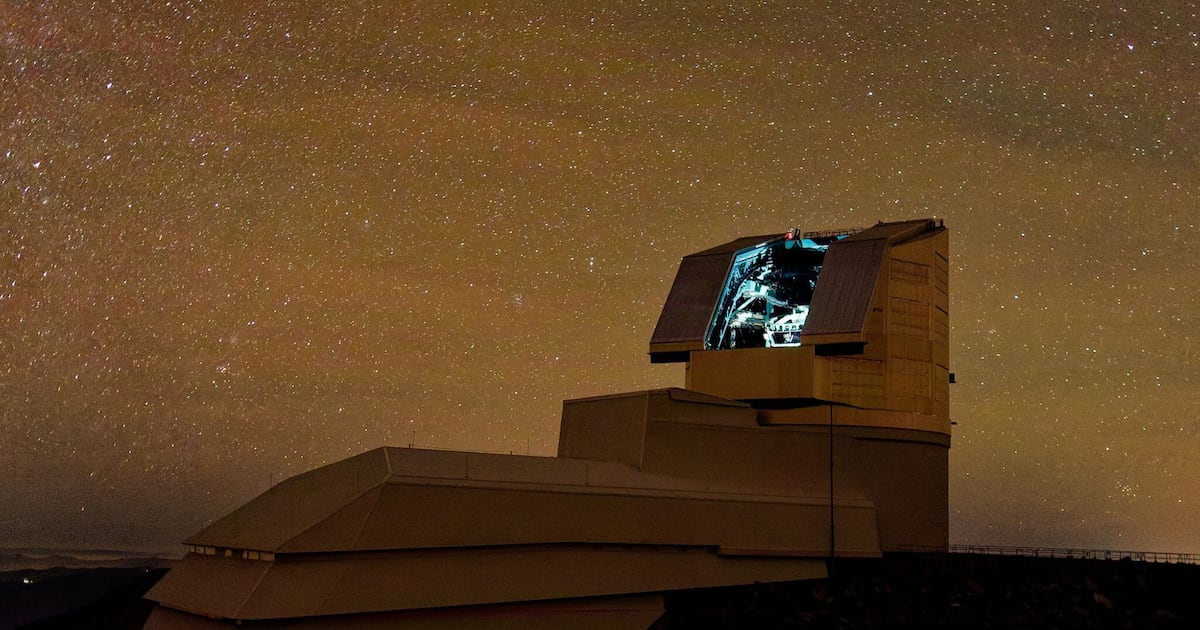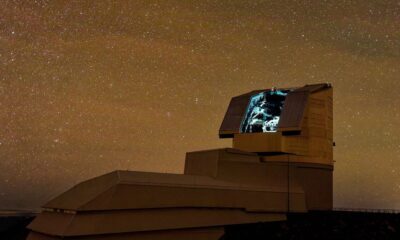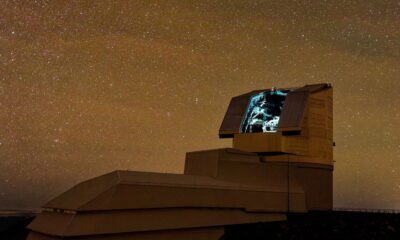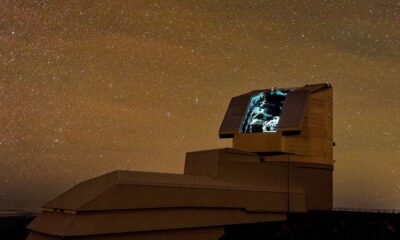Science
New Study Challenges Long-Held Beliefs About Dark Energy’s Role

A new study presents a bold challenge to the established understanding of dark energy, suggesting that the universe’s expansion may be slowing rather than accelerating. If validated, this finding could significantly alter the framework of contemporary cosmology, which has been built around the assumption of an ever-expanding universe driven by dark energy.
The concept of dark energy emerged in the late 1990s when astronomers observing Type 1a supernovae discovered that far-off supernovae were dimmer than expected. This led them to conclude that these celestial bodies were receding from Earth at increasing speeds. Their groundbreaking research earned them the Nobel Prize in Physics in 2011. Yet, the precise nature of dark energy has remained elusive.
In a study published on November 6 in the journal Monthly Notices of the Royal Astronomical Society, a team of researchers led by Young-Wook Lee, a professor of astrophysics at Yonsei University in South Korea, posits that dark energy may not be exerting the same force it once did. This assertion builds on previous findings from the Dark Energy Spectroscopic Instrument (DESI) project, which, last year, produced the largest three-dimensional map of the universe. The DESI team suggested that dark energy could be weakening over time, hinting that the universe’s expansion rate may eventually decelerate.
Lee explains, “Dark energy is there, but the present universe has already entered a decelerating phase today.” He emphasizes that if the universe’s expansion begins to slow down, it could fundamentally change its fate. Speculations about a possible “big crunch,” a contraction of the universe, are now back on the table, a scenario previously dismissed by many astronomers.
To arrive at their conclusions, Lee and his colleagues studied a sample of 300 galaxies containing Type 1a supernovae. They proposed that the dimming of these distant stars is not solely due to their distance from Earth but also related to the age of the progenitor stars. Junhyuk Son, a doctoral candidate at Yonsei University and co-author of the study, noted, “Before our work, Type Ia supernovae were thought to explode with nearly identical intrinsic brightness. However, we found that their luminosity depends on the age of the stars that produce them.”
The research team claims a high statistical confidence of 99.99 percent regarding the relationship between the age of progenitor stars and supernova brightness. If confirmed, this would represent a significant shift in cosmological understanding, suggesting that dark energy evolves over time rather than remaining constant.
Critics, however, have expressed skepticism about the study’s claims. Adam Riess, a professor of physics and astronomy at Johns Hopkins University and a Nobel laureate, argues that the findings rest on a flawed premise. He contends that current observations indicate that supernovae occur predominantly in regions with young stars, contradicting the study’s assertions about aging supernovae.
Lee disputes this, clarifying that Type Ia supernovae can be found in both old elliptical galaxies and younger star-forming regions, challenging Riess’s perspective. He further claims that the age-brightness correlation proposed in their study has been corroborated by two independent research teams in the United States and China.
Other experts in the field have echoed some of Riess’s concerns. Dan Scolnic, an associate professor of physics at Duke University, points out that the study’s leap from host galaxy age to supernova age lacks physical justification. He emphasizes that current models already account for the relationship between brightness and the environments of supernova progenitors, suggesting that the universe continues to expand at an accelerating rate.
Despite the controversies, Lee acknowledges the potential for further dialogue within the scientific community. He highlights the upcoming launch of the Vera C. Rubin Observatory, scheduled to begin its Legacy Survey of Space and Time in early 2026. This project aims to gather extensive data on supernovae and other cosmic phenomena, which could help clarify the current debate.
“Vera Rubin will discover more than 20,000 new supernova host galaxies with high-precision age measurements,” Lee stated. This extensive data collection may provide a more direct cosmological test, addressing concerns regarding age bias in supernova studies.
Lee concludes, “Dark energy is getting weirder and weirder. There is no good theory that can explain this very weird behavior. Maybe, in five years, even more surprising results will emerge.” As the scientific community grapples with these findings, the quest to unravel the mysteries of dark energy continues.
-

 Politics3 weeks ago
Politics3 weeks agoSecwepemc First Nation Seeks Aboriginal Title Over Kamloops Area
-

 World4 months ago
World4 months agoScientists Unearth Ancient Antarctic Ice to Unlock Climate Secrets
-

 Entertainment5 months ago
Entertainment5 months agoTrump and McCormick to Announce $70 Billion Energy Investments
-

 Lifestyle4 months ago
Lifestyle4 months agoTransLink Launches Food Truck Program to Boost Revenue in Vancouver
-

 Science5 months ago
Science5 months agoFour Astronauts Return to Earth After International Space Station Mission
-

 Technology3 months ago
Technology3 months agoApple Notes Enhances Functionality with Markdown Support in macOS 26
-

 Top Stories2 months ago
Top Stories2 months agoUrgent Update: Fatal Crash on Highway 99 Claims Life of Pitt Meadows Man
-

 Lifestyle3 months ago
Lifestyle3 months agoManitoba’s Burger Champion Shines Again Amid Dining Innovations
-

 Sports5 months ago
Sports5 months agoSearch Underway for Missing Hunter Amid Hokkaido Bear Emergency
-

 Politics4 months ago
Politics4 months agoUkrainian Tennis Star Elina Svitolina Faces Death Threats Online
-

 Politics4 months ago
Politics4 months agoCarney Engages First Nations Leaders at Development Law Summit
-

 Technology5 months ago
Technology5 months agoFrosthaven Launches Early Access on July 31, 2025





















